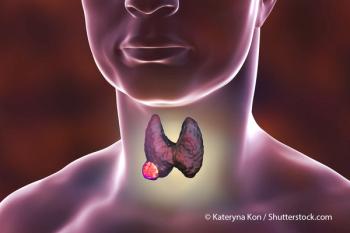
Do Larger Thyroid Tumors Mean Higher Rates of Malignancy and False-Negative FNA Results?
The authors looked at whether rates of malignancy and false-negative fine-needle aspiration results are heightened in large thyroid nodules.
Rates of malignancy and false-negative fine-needle aspiration (FNA) results are not heightened in large thyroid nodules, according to results of a recent meta-analysis
“Management of large thyroid nodules is controversial, as data are conflicting regarding overall rates of malignancy (ROM) in all nodules and frequency of false-negative fine-needle aspiration results in cytologically benign nodules,” wrote the authors, led by
It remains to be elucidated whether patients with cytologically benign thyroid nodules of ≥ 4 cm should receive management different from that of patients with smaller nodules. Guidelines regarding this uncertainty are unclear, and the literature offers conflicting recommendations. Consequently, some surgeons decide to resect large thyroid nodules despite cytology for fear of a false-negative FNA.
In the current meta-analysis, researchers evaluated and compared rates of malignancy and FNA results of small and large nodules. Multiple reviewers systematically mined PubMed for 35 articles that described nodules stratified by size, with benign and other cytology, and with postsurgical histologic diagnoses. Size cutoffs were employed as follows: at 3 cm in 14 articles, at 4 cm in 24 articles, and at 5 cm in 1 article. Overall, more than 20,000 pooled nodules were assessed in the meta-analysis, more than 7,000 of which were benign.
The team found that the rate of malignancy in all nodules ≥ 3 cm was 13.1%, and the rate of malignancy in all nodules ≥ 4 cm was 20.9%. These rates were lower compared with those found in nodules < 3 cm (19.6%) and < 4 cm (19.9%) (odds ratio [OR], 0.72; confidence interval [CI], 0.64–0.81; OR, 0.85 [CI, 0.77–0.95], respectively). Furthermore, FNA results in nodules ≥ 3 cm (7.2%) were not significantly different from those of smaller nodules (5.7%) (OR, 1.47; CI, 0.80–2.69]). However, FNA results in nodules ≥ 4 cm (6.7%) were a little higher compared with nodules less than 4 cm (4.5%) (OR, 1.38; CI, 1.06–1.80). Notably, papillary thyroid carcinoma was the most commonly observed false-negative diagnosis.
One limitation of the meta-analysis is that only modest numbers of large nodules were assessed in component studies. This limitation likely stemmed from low resection rates for benign nodules in clinical practice. Furthermore, all but two studies analyzed were retrospective, resulting in selection bias.
Based on the results, Cipriani et al concluded that patients with large, cytologically benign nodules do not need immediate surgical resection because false-negative FNA rates are low, and these rates should drop further due to nomenclature revision of a subset of follicular variants of papillary thyroid carcinoma. Furthermore, the authors speculated that surgical resection of benign nodules may yield higher morbidity vs close clinical follow-up (ie, repeat ultrasound or FNA).
Newsletter
Stay up to date on recent advances in the multidisciplinary approach to cancer.
































































































